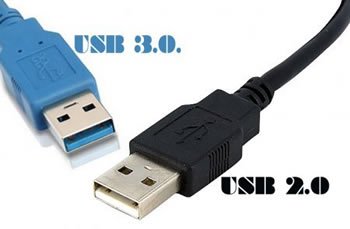

The USB 3.0 standard allows you to use a single cable to connect up to 127 devices to your computer, while USB 2.0 allows you to connect up to 127 devices through a single cable. In the world of computing, USB 2.0 is the current standard, but USB 3.0 is a newer standard that is capable of transferring data at higher speeds than the previous standard. It also has a higher bandwidth than USB 2.0, which means it can transfer more data at once, which is great for transferring large files or transferring data between multiple devices. USB 3.0 is a new standard that can transfer data faster than USB 2.0. USB 3 is backward compatible with the USB 2 standard, so all your existing USB 2 devices will work with the new USB 3.0 standard. The USB standard has been around for over a decade now, but with the increase in the number of devices, it was necessary to introduce a new version. USB 3 is a newer version of USB, which has a data transfer rate greater then 480Mbps and that’s why it has been more widely used in the last decade, because it is faster than USB 2.

USB 2 is the original USB connector, which was introduced in the year 2000. Moreover, USB 3.0 can transfer data at up to 5 Gbps, which is roughly 10 times faster than USB 2.0’s maximum speed of 480 Mbps. USB 3.0 is a new standard that is faster than USB 2.0, and offers more data transfer speeds than USB 2.0. USB 2.0 is a standard for connecting external devices to a computer or laptop. The USB 3.0 is also faster than the USB 2.0 and offers increased power transfer rates and higher data transfer speeds, compared to the previous version. In addition, The USB 3.0 is backward compatible with USB 2.0, so you can use it with older devices that have USB 2.0 ports. The new four-pin connector looks like a cross between a USB plug and a video plug. The older USB 2.0 ports are black in color and have a four-pin connector that is backwards compatible with the newer USB 3.0 ports. The newer USB 3.0 ports are white in color and have a new four-pin connector that is backwards compatible with the older USB 2.0 ports. The USB 3.0 has three separate ports, whereas the USB 2.0 has only one port. USB ports for USB 2.0 and USB 3.0 also differ visually. The USB ports for USB 2.0 and USB 3.0 also differ visually

So What’s The Difference Between USB 2 Vs 3? 1. USB 2.0 also introduced the USB hub, which enables multiple USB devices to be connected to a single port on a computer. It allows you to connect up to 12 devices at once, compared to the previous USB 1.1, which only allowed up to five devices to be connected at once. It is an evolution of the USB 1.1 specification and is backward compatible with it.ĭue to it’s upgradation it has a number of new features, like faster data transfer rates, transfer speeds up to 480 Mbit/s (over 12 MB/s), and the ability to attach more than one device to a single USB port.
Is usb 3.0 compatible with usb 2.0 ports serial#
USB 2.0 is a new specification of the Universal Serial Bus (USB) that was introduced in 2000. Moreover, USB 3.0 is more efficient than USB 2.0 in terms of data transfer speed and power consumption. It is backward compatible with USB 2.0 and the older USB 1.1 standard. USB 3.0 is a faster version of USB 2.0, which provides 10 times faster data transfer rates than USB 2.0. USB 3.0 was developed to enable data transfer speeds of up to 5 Gbps, which is 100 times faster than USB 2.0. The USB 3.0 specification was finalized in January 2008, and was introduced in September 2008. It was developed by Intel, and it is also known as SuperSpeed USB. One such question that we often hear is “Does USB 2.0 work with 3.0?”Īre there any other considerations you should take into account when trying to connect a USB 2 device to a USB 3 port on your computer? This article will answer all of these questions. Whether you’re just getting started building or maintaining a computer or you’re a computer expert with a hundred years of experience, there are always new questions to ask. Why? It’s not an error on your part, nor is it a fault in the device you’re plugging in it’s simple compatibility issues between these two types of ports, and to understand this, this is an article for you. The USB 3.0 device you’ve plugged into the USB 2.0 port doesn’t work.


 0 kommentar(er)
0 kommentar(er)
